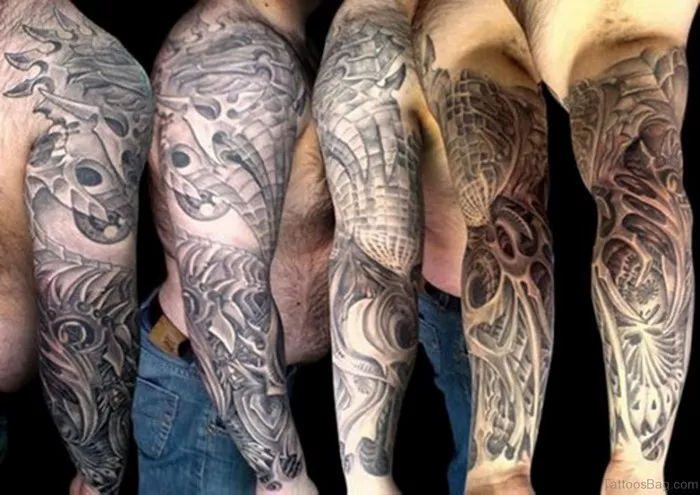Tattoos have long been a means of personal expression, cultural identification, and artistic exploration. Among the myriad styles and designs, Celtic tattoos stand out for their intricate patterns and rich symbolism. However, a common question arises: are Celtic tattoos tribal? To answer this query comprehensively, we delve into the origins, meanings, and distinctions between Celtic and tribal tattoos, shedding light on their unique characteristics and cultural contexts.
Exploring Celtic Tattoo Origins and Symbolism
Celtic tattoos trace their roots back to the ancient Celtic civilizations of Europe, notably the Celts who inhabited regions such as Ireland, Scotland, Wales, and parts of England and France. These ancient peoples had a rich cultural tapestry characterized by intricate artwork, mystical symbols, and a deep connection to nature and spirituality.
Celtic tattoos draw heavily from the visual motifs and symbolism of this ancient culture. Key elements include:
1. Knotwork: Intricately woven patterns symbolizing eternity, interconnectedness, and continuity of life.
2. Spirals: Representing cycles of life, growth, and transformation.
3. Triskeles: Triple spirals denoting themes of progress, cycles, and spiritual evolution.
4. Animals: Depictions of animals such as dragons, birds, and wolves, often symbolizing strength, wisdom, and guardianship.
5. Tree of Life: A symbol of interconnectedness, growth, and the cycle of life and death.
Each motif in Celtic tattoos carries layers of meaning, often intertwining with elements of mythology, spirituality, and cultural heritage. While these designs may appear tribal in nature due to their bold lines and abstract forms, their origins lie in the distinct cultural milieu of the ancient Celts.
Distinguishing Celtic Tattoos from Tribal Tattoos
To understand whether Celtic tattoos are tribal, it’s crucial to differentiate between the two styles based on their cultural origins, artistic motifs, and symbolic meanings.
Cultural Origins:
Celtic tattoos originate from the ancient Celtic civilizations of Europe, which flourished from around 500 BCE to 400 CE. The Celts had a distinct cultural identity, characterized by their language, customs, and artistic traditions.
In contrast, tribal tattoos encompass a broader category of body art associated with indigenous cultures from various parts of the world, including but not limited to Polynesia, Maori, Native American, and African tribes. These diverse cultures each have their unique tattooing traditions, symbolic motifs, and cultural significance.
Artistic Motifs:
While both Celtic and tribal tattoos often feature bold, geometric designs, they employ different artistic motifs and visual styles.
Celtic tattoos are renowned for their intricate knotwork, spirals, and zoomorphic designs inspired by Celtic art and mythology. These designs typically feature precise, interwoven patterns and symmetrical compositions, reflecting the meticulous craftsmanship of the ancient Celts.
In contrast, tribal tattoos exhibit a broader range of stylistic elements, depending on the cultural traditions they represent. For example, Polynesian tattoos may incorporate motifs such as waves, spearheads, and geometric patterns, while Maori tattoos often feature intricate spirals, curves, and symbolic representations of ancestors and nature.
Symbolic Meanings:
The symbolism embedded in Celtic and tribal tattoos also differs based on their respective cultural contexts and historical narratives.
Celtic tattoos often convey themes of interconnectedness, spirituality, and the cyclical nature of life. Knotwork, for instance, symbolizes the eternal journey of life and the interconnectedness of all things, while animal motifs may represent qualities such as courage, wisdom, or protection.
Tribal tattoos, on the other hand, carry meanings specific to the cultural traditions from which they originate. For example, in Polynesian culture, tattooing served as a rite of passage, with each symbol and pattern carrying personal or familial significance. Maori tattoos, known as “Ta Moko,” were traditionally used to denote social status, genealogy, and tribal affiliations, with intricate designs conveying ancestral connections and personal stories.
Cultural Appropriation and Respectful Tattooing Practices
In recent years, discussions surrounding cultural appropriation and respectful tattooing practices have gained prominence within the tattoo community. As interest in tribal and indigenous tattoo styles grows, it’s essential for tattoo enthusiasts to approach these art forms with cultural sensitivity and awareness.
While appreciating and drawing inspiration from diverse tattoo traditions is natural, it’s crucial to do so respectfully and with an understanding of the cultural significance behind these art forms. This includes:
1. Researching Cultural Context: Take the time to learn about the cultural origins and meanings behind the tattoo styles you’re interested in. Understand the significance of the symbols and motifs you choose to incorporate into your design.
2. Consulting with Artists: Work with experienced tattoo artists who have knowledge and respect for the cultural traditions you’re drawing inspiration from. Collaborate with them to create a design that honors the cultural heritage behind the tattoo style.
3. Respecting Tribal Cultures: Recognize that tribal tattoos hold deep cultural and spiritual significance for indigenous communities. Avoid appropriating sacred symbols or designs without proper understanding or permission.
4. Celebrating Diversity: Embrace the diversity of tattoo styles and cultural traditions, celebrating the rich tapestry of human expression and creativity. Explore a variety of tattoo styles while respecting their cultural roots and significance.
By approaching tattooing with cultural sensitivity and respect, enthusiasts can honor the diverse traditions that inspire their artwork while fostering appreciation for the cultural heritage behind these timeless art forms.
Conclusion
In conclusion, Celtic tattoos are distinct from tribal tattoos in their cultural origins, artistic motifs, and symbolic meanings. While both styles feature bold, geometric designs, Celtic tattoos draw inspiration from the ancient Celtic civilizations of Europe, incorporating intricate knotwork, spirals, and zoomorphic motifs laden with symbolism.
As tattoo enthusiasts explore the rich tapestry of tattoo artistry, it’s essential to approach diverse tattoo traditions with cultural sensitivity and respect. By honoring the cultural heritage behind these art forms and collaborating with knowledgeable artists, individuals can celebrate the diversity of human expression while fostering understanding and appreciation for the cultural significance of tattooing across different traditions and communities.

